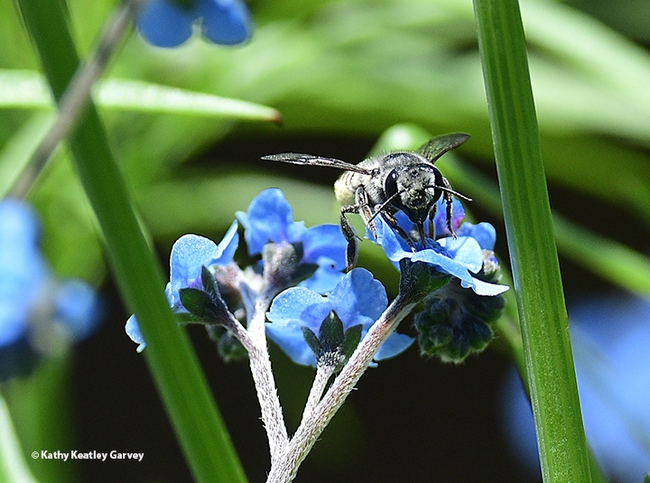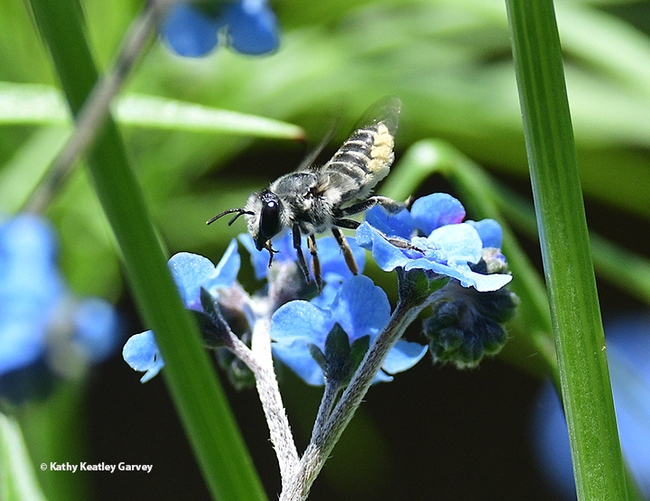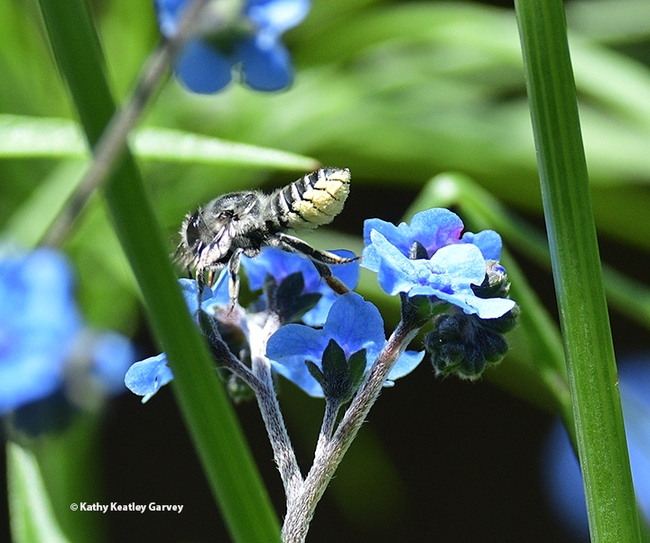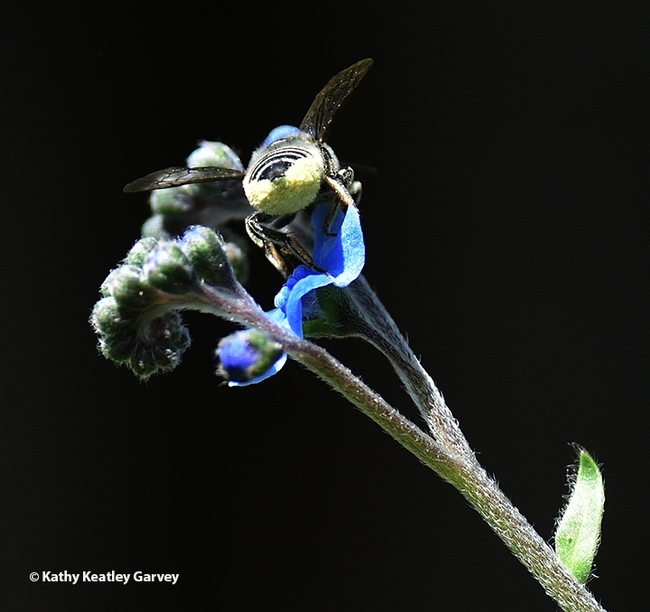Hello there, little leafcutter bee! Yes, you, foraging on the sky-blue Chinese Forget-Me-Nots!
You're just in time for National Pollinator Week!
Leafcutter bees, family Megachilidae, are so named because the females cut leaves and petals (perfectly round holes!) to line their nests. Smaller than honey bees--and much faster, leafcutter bees are easily recognizable by the black-white bands on their abdomen.
The females do all the work. They gather pollen and nectar, make the nests from the leaf and petal fragments, and lay eggs. They seal the egg chambers with the leaves or flower petals.
In our pollinator garden, leafcutter bees are quite fond of Chinese Forget-Me-Nots, Cynoglossum amabile. "Many wild bees prefer flowers in the violet-blue range—in part because these blossoms tend to produce high volumes of nectar," according to an Oct. 18, 2017 article in Science.org.
Of the 4000 bee species known in the United States, about 1600 reside in California. The leafcutter bee is just one of them. The family, Megachilidae, includes these leafcutting bees:Megachile angelarum, M. fidelis and M. montivaga; the alfalfa leafcutting bee, M. rotundata; the Mason bee, Osmia coloradensis; and the blue orchard bee (BOB), Osmia lignaria propinqua.
For more information on California's bees, read California Bees and Blooms: A Guide for Gardeners and Naturalists (Heyday), the work of UC-affiliated scientists,
Thorp, a global and legendary authority on bees and a distinguished emeritus professor of entomology at UC Davis, died June 7, 2019 at his home in Davis. He was 85.
Attached Images:

A leafcutter bee, family Megachilidae, peers at the photographer. "Here I am! It's National Pollinator Week." (Photo by Kathy Keatley Garvey)

The leafcutter bee continues foraging on the Chinese-Forget-Me-Nots. (Photo by Kathy Keatley Garvey)

The leafcutter bee ignores the photographer. (Photo by Kathy Keatley Garvey)

"Okay, I'm leaving now for another blossom." The leafcutter bee is about to take flight. (Photo by Kathy Keatley Garvey)